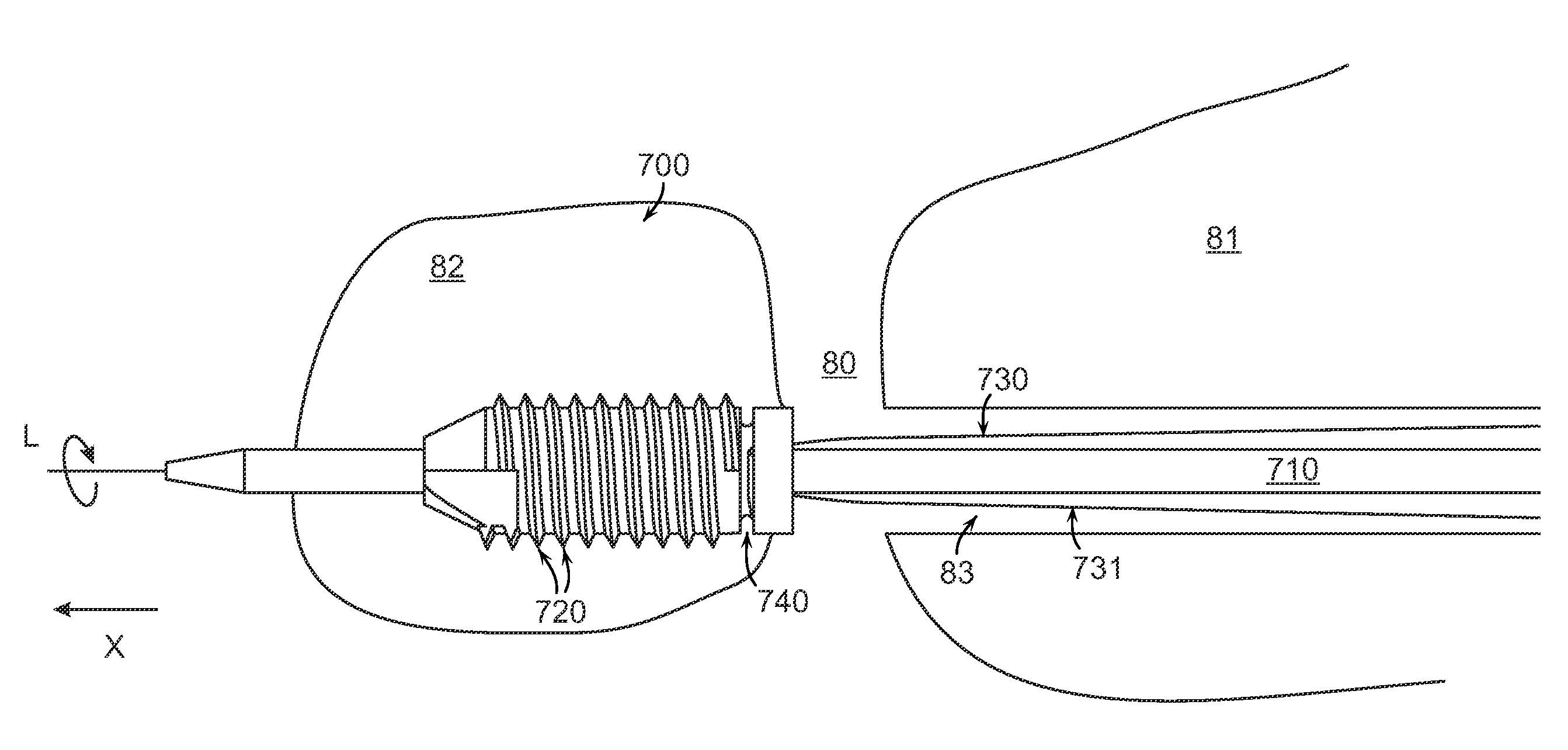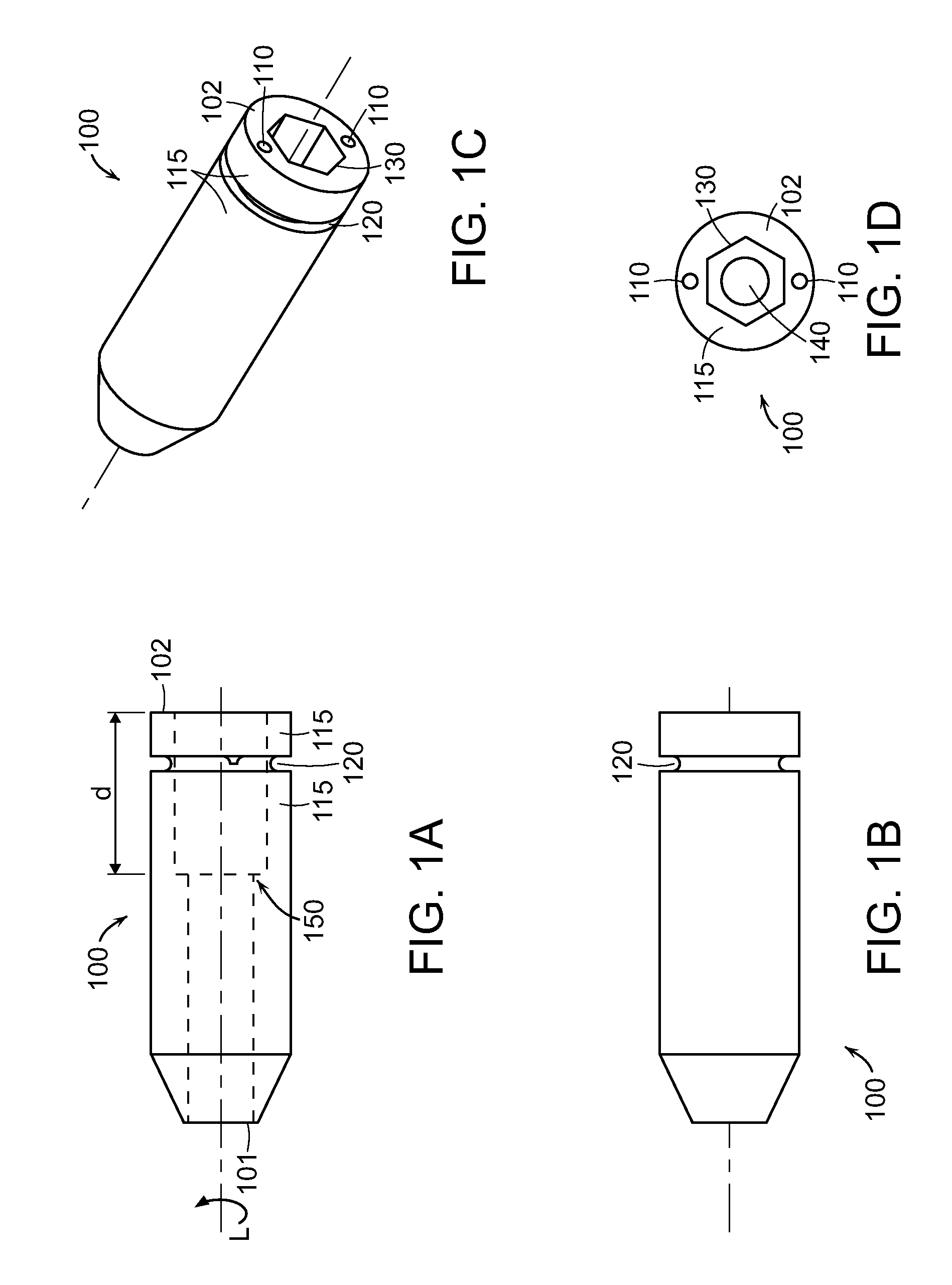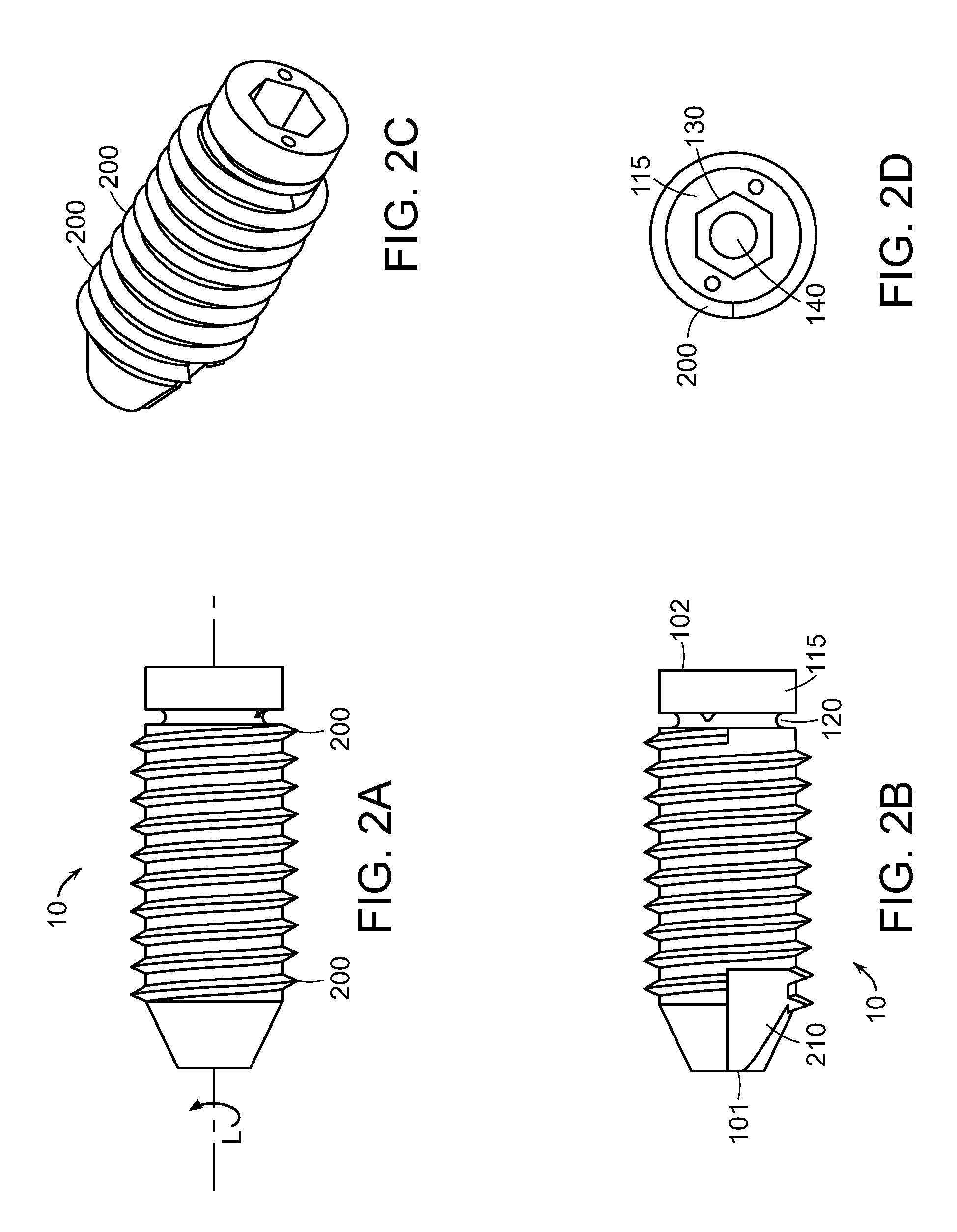Cannulated anchor and system
a cannulated anchor and system technology, applied in the field of implantable medical devices, can solve problems such as damage to surrounding bodily tissues, and achieve the effect of maximizing the accuracy of anchor placemen
- Summary
- Abstract
- Description
- Claims
- Application Information
AI Technical Summary
Benefits of technology
Problems solved by technology
Method used
Image
Examples
first embodiment
[0026]Regarding a first embodiment, with reference to FIG. 1(a)-(d), inner core anchor portion 100 is shown. Inner core anchor portion 100 has a leading end 101 and trailing end 102; ends 101 and 102 are determined with reference to a defined longitudinal system axis, L, along which cannulated anchor 10 is moved to engage and anchor into tissue. Inner core anchor portion 100, while being essentially cylindrical is, in the embodiment of FIG. 1(a)-(d), shown to be tapered proximate to leading end 101. There may be a variety of reasons to taper the inner core 100, notably for ease of insertion into a pre-existing tissue orifice prepared by a cannulated drill. However, there are circumstances (as shown supra) for which tapering may be undesirable and is, therefore, not considered an essential feature of the disclosed cannulated anchor embodiments. Centrally disposed cannulation 130 is sized to accept a guidewire (not shown) therethrough. When viewing FIGS. 1(c) and 1(d) (as well as 1(a)...
embodiment 100
[0030]Referring now to FIG. 2(a)-(d), a cannulated anchor 10 embodiment is comprised of inner core anchor portion embodiment 100 shown in FIG. 1(a)-(d) and an outer anchor portion. The outer anchor portion of FIG. 2(a)-(d) features a plurality of helical ribs 200. Helical ribs 200 are disposed at outer anchor locations (or outer length positions) along axis L. These locations are shown to be disposed between the onset of the taper of inner core anchor portion 100 and circumferential recess 120. Helical ribs 200 extend radially outward from inner core wall 115. The ribs 200, along with cutting edge 210, provide an outer surface for cannulated anchor 10 that effects anchoring into tissue by rotating anchor 10 about axis L thereby creating a self-tapped orifice into tissue. Anchor 10 is, in effect, screwed into the tissue orifice created by rotating anchor 10. Rotation is accomplished by applying torque to an installer when engaged with anchor 10 via the placement of a portion (sometim...
PUM
 Login to View More
Login to View More Abstract
Description
Claims
Application Information
 Login to View More
Login to View More - R&D
- Intellectual Property
- Life Sciences
- Materials
- Tech Scout
- Unparalleled Data Quality
- Higher Quality Content
- 60% Fewer Hallucinations
Browse by: Latest US Patents, China's latest patents, Technical Efficacy Thesaurus, Application Domain, Technology Topic, Popular Technical Reports.
© 2025 PatSnap. All rights reserved.Legal|Privacy policy|Modern Slavery Act Transparency Statement|Sitemap|About US| Contact US: help@patsnap.com



